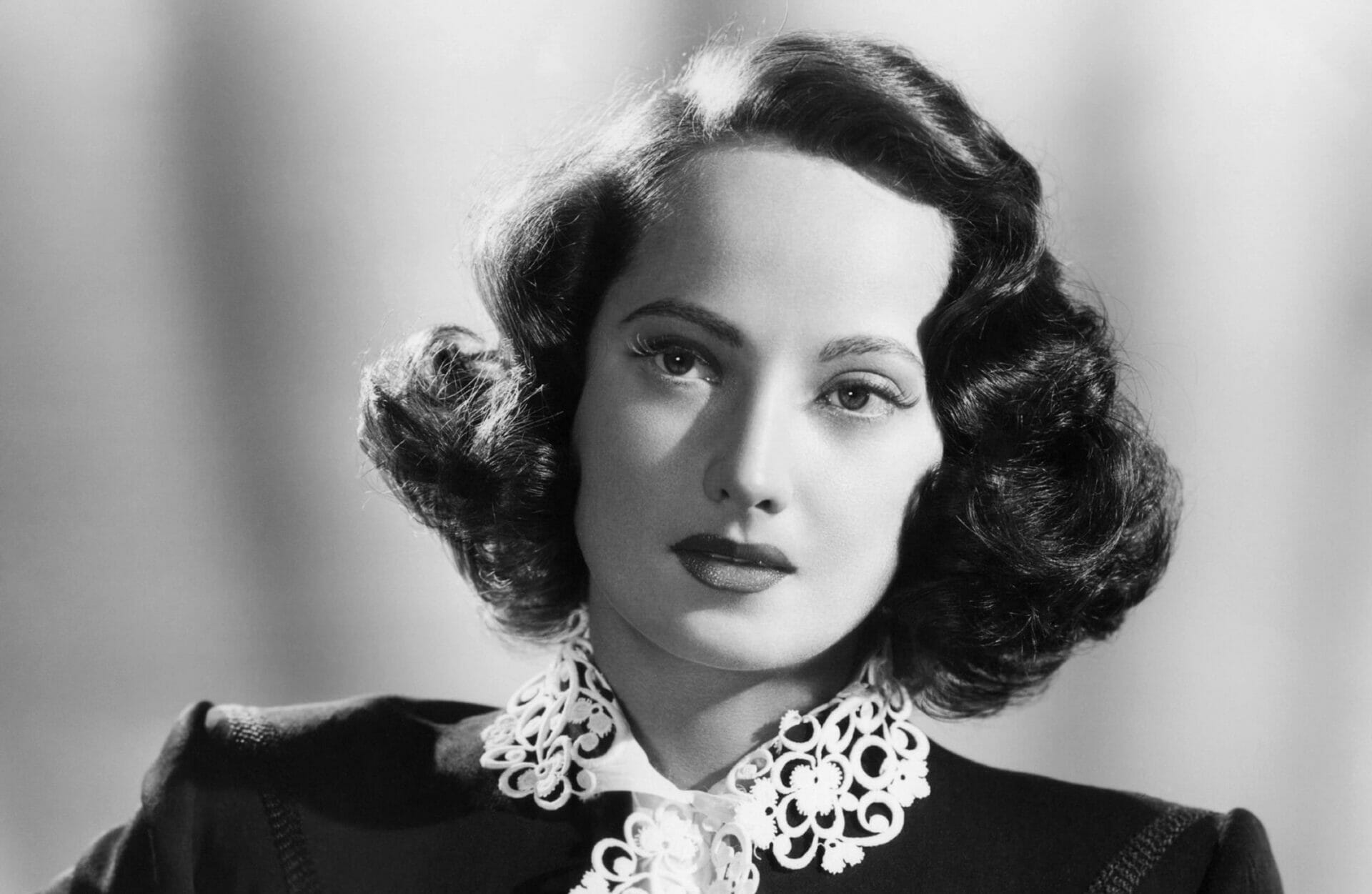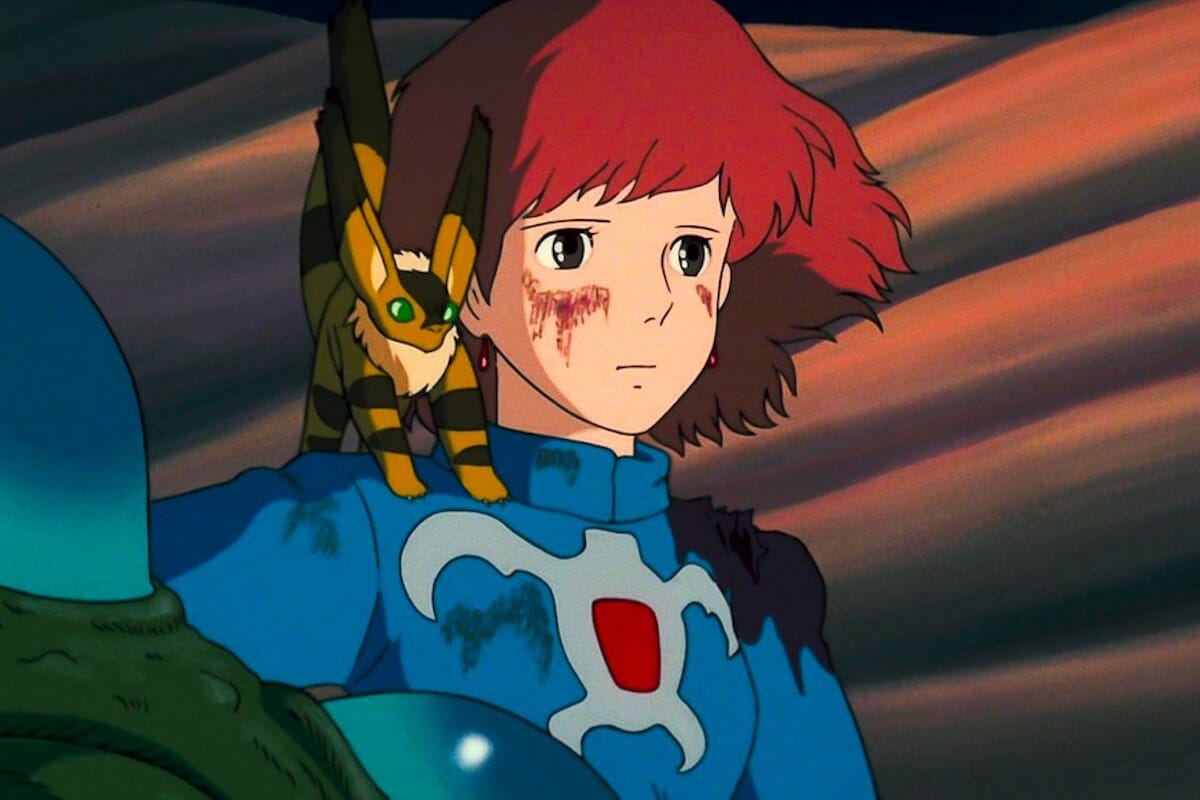Over the last 18 months many of us have seen our own faces far more than we’re used to, with huge chunks of our work and social worlds having moved onto our screens. Thanks to staring at ourselves via Zoom or Facetime relentlessly, staying indoors more than usual, and comfort eating, I hope I’m not alone in being tempted to try out a Snapchat filter on my tired face. But if you reach for your mobile and slide through the various filters, you might notice a common trend: a pair of pinpricks of light, dancing in your eyes. The history of how they got there spans continents and cultures, from Hollywood to anime, and reveals a hidden history of a fascinating woman of color that you’ve probably never heard of.
The story of your favorite filter begins in Mumbai in 1911 with the birth of a little girl named Estelle Merle. She was gifted the nickname ‘Queenie’ when in the same year Queen Mary — officially titled Queen of the United Kingdom and British Dominions, Empress of India — made a royal visit to India . Merle was raised by Arthur Terrence O’Brien Thompson, a mechanical engineer from the North of England, and his wife Charlotte Selby, who Merle’s biographers describe as having Sri Lankan (at the time known as Ceylon) and Maori ancestry. Merle’s birth certificate, however, reveals that her biological mother was actually Charlotte’s daughter, Constance, who would have been just 14 at the time of Merle’s birth. Her biological father was an Ango-Irish foreman of a tea plantation. It is an understatement to say that Merle’s story was harshly sculpted by British colonialism.
Sadly, Merle’s grandfather (and adoptive father), Arthur, died from pneumonia at the Battle of the Somme, leaving her family in a state of impoverishment in Mumbai. They moved to better circumstances in Kolkata, but Merle faced discrimination due to her mixed-ethnicity, both during her education and romantic life. One of her romantic partners, a British soldier and former actor, apparently rejected her when he discovered that she was of mixed-ethnicity.
However, he promised to introduce her to show business and eventually Merle managed to leverage this relationship into an introduction to a director, Rex Ingram, in France. Ingram cast her in a small part, and she began her new life. She was spotted by the Hungarian-born Jewish director, Alexander Korda, and cast as Anne Boleyn in The Private Life of Henry VIII (1933) – putting in context the current outrage about a non-white actress playing the former Queen. It was this role where she was first given her stage name: Merle Oberon. As she stepped into the spotlight, she also rewrote her own history: claiming from this point to have been born in Tasmania in Australia, possibly inspired by her acting contemporary Errol Flynn, who was born in Battery Point on the island.
Merle also played Lady Blakeney in The Scarlet Pimpernel, Cathy in Wuthering Heights and was nominated for an Academy Award for her role in Dark Angel. She was officially a star. Merle married Korda, becoming Lady Korda when her husband was knighted by King George VI in 1942 for his efforts during the war. Korda was the first filmmaker to be honoured in this way, indicating the important role of cinema during WW2. In 1945, however, Merle left Korda for another influential person in film, renowned American cinematographer Lucien Ballard – and although this wouldn’t be her final romance or marriage — it was this relationship, between actress and cinematographer, which cemented Merle’s influence on pop culture.
Merle was incredibly beautiful — especially her dark eyes. Sadly, she also had facial scars from an automobile accident which showed up under the harsh studio lights. During filming of The Lodger (1944), Ballard devised a brand new light to make the most of her eyes and hide her scars. The catch light, to this day nicknamed ‘The Obie’, creates a flattering light over the face with sparkling pinpricks in the subject’s eyes. This enchanting effect quickly caught on – used in horrors like The Lodger to humanize protagonists and victims, and in romantic comedies to imply intense emotions.
Hitchcock, a master of lighting, uses catchlights to dramatic effect in Rear Window (1954) for both these purposes. Grace Kelly and James Stewart’s eyes, as well as their quarry’s, are highlighted to evoke both terror at the unfolding thriller and during the romantic scenes. The effect became firmly established in Hollywood – to the extent that it was recreated in the animations of Walt Disney. Compare Snow White’s eyes (first screened in 1937) and Duchess’ eyes in The Aristocats which came out in 1970. In one scene in The Aristocats, the pace of the movie slows, the frame tightens on the character’s eyes and her love interest, Thomas O’Malley, remarks that Duchess’ eyes are like sapphires, as they sparkle in the darkly lit scene.
This effect is used again in 1973 in Disney’s animated adaptation of Robin Hood as Maid Marian and Robin Hood meet in the woods to confess their love. The scene is darkly lit, with fluttering fireflies (as a Nottinghamshire girl I have to point out here that fireflies are not native to the UK) and there is a slow shot/reverse-shot as the two characters look into each other’s eyes, complete with sparkle, recreating the technique being used in live action romances.
There’s a fantastic section on the use of the catch light in rom-coms in Mark Kermode’s documentary series Secrets of Cinema that explores its use in this genre. Returning to Disney, by the time the studio hit it’s renaissance period with The Little Mermaid (1989), Beauty and the Beast (1991) and Aladdin (1992) the catch light effect was part of the Disney ‘look’ – to the extent that official and fan art of earlier characters add in the sparkle to characters’ eyes. Would Ariel or Belle be quite as iconic without borrowing Merle’s sparkle?
The effect then made the leap into a newly unfurling genre: Japanese anime. Anime can be traced back as early as 1907 and continued to grow in popularity over the following decades. It was also recognised as a powerful propaganda tool during WW2. Both sides of the conflict used cinema to fight the war — Merle, along with Alexander Korda and Lucien Ballard, all worked in movies in Hollywood during the War. Animation also played its part, with Disney producing movies like Der Fueher’s Face (1943)—an animated short in which Donald Duck has a nightmare about living in Nazi Germany, which went on to win an Academy Award.
In 1945 the very first feature-length Japanese animated film, Momotarō: Umi no Shinpei (or Momotarō: Sacred Sailors) was screened — a propaganda movie in which a group of animals join the war effort. The bear cub, puppy, pheasant and monkey invade the real island of Celebes, now part of Indonesia and then under British subjugation. It is said the style of the film was partly inspired by Disney’s Fantasia (1940), which the Naval Ministry had apparently shown the director, Mitsuyo Seo. The movie includes the cute animal protagonists negotiating with trembling British soldiers as well as children practising parachuting onto a picture of America and —just like the Donald Duck animation involving Nazi salutes and dozens of swastikas —this film was intended to be watched by children.
Post-WW2, a new generation of Japanese animators began to produce films, inspired by American movies which had flooded into Japan – including Disney animations. This included Osama Tezuka, sometimes called the ‘God of Manga’ and perhaps best known as the creator of Astro Boy. Tezuka is often credited as having shaped the look of this art form. In 1965 Tezuka released an anime adaption of his successful manga series Jungle Emperor (often translated to Kimba the White Lion for English-speaking audiences) which served as the first Japanese animated series in color.
The influence of Disney is clear in his style — the rounded features and large heads, as well as the eyes – sparkle included. In an interesting symmetry, when Disney’s The Lion King came out in 1994, fans of Tezuka highlighted the similarities to Jungle Emperor. The themes of royalty, the protagonists’ names (Simba and Kimba) and even specific frames seemed eerily similar. This period is also the time in which Hayao Miyazaki, who co-founded the internationally famous Studio Ghibli, rose to fame. Miyazaki would return over and over again to the theme of the pointless, wasteful destruction of war, pushing back against the earlier generations of animators that had gone before him. And of course, both Miyazaki and Tezuka used the sparkle in their animated eyes that they’d borrowed from Disney, such as in Miyazaki’s Nausicaä of the Valley of the Wind (1984).
In modern anime the sparkle has become highly codified. While the default anime eye has the double-sparkle created by catch lights, this can intensify depending on how the character is feeling. The eye can be filled or entirely replaced with sparkles, to indicate love, desire, joy and enthusiasm, or vanish completely to indicate a character that is joyless, traumatized or in a trance. Anime and manga have influenced Japanese aesthetics —from fashion to food advertising. They also influenced ‘Purikura’ photo booths —”print clubs” where Japanese teenagers will pose with their friends for photos and add stickers and filters to create exaggerated and cute effects to the images. These ‘print clubs’ pre-date Snapchat filters by at least a decade and are still incredibly popular to this day.
And so we return to our phones. Snapchat were clearly influenced by Purikura in the development of their filters, with the ability to add stickers and cute effects to your photos — including many which add that mysterious, romantic sparkle to your eyes. It seems tragic to me that despite the lighting effect being inspired by a woman of color, and the filter technology borrowing heavily from Japanese culture, there are well-documented issues with Snapchat filters in how they distort the features of people of color —widening eyes and whitening skin to add a lens of white beauty standards to our selfies.
This tragedy is reflected in Merle’s own story. She insisted for years that she was originally from Tasmania; going so far as to allegedly threaten to sue her nephew Michael Korda if he revealed her true family history in a biography he was writing. Finally, in 1978, the Lord Mayor of Hobart in Tasmania invited Merle to visit the Australian state for an official reception. Merle attended but during the reception she admitted she hadn’t been born on the island, and collapsed, seemingly due to a panic attack. Merle’s attempt to obscure her roots in India and her mixed-ethnicity heritage by associating herself with the perceived whiteness of Australia had finally unravelled. Still, when she died the following year due to a stroke, newspapers called her ‘Tasmanian-born’.
Merle Oberon is honored with a star on the Hollywood Walk of fame. Her nephew, Michael, published a slightly fictionalized novel about his aunt, which was adapted by the Australian Broadcasting Company into a mini-series called ‘Queenie’ and a character in a recent adaptation of F. Scott Fitzgerald’s unpublished novel The Last Tycoon included a character based on Merle. It is undeniable that she remains with us to this day as the sparkle in our eyes.










